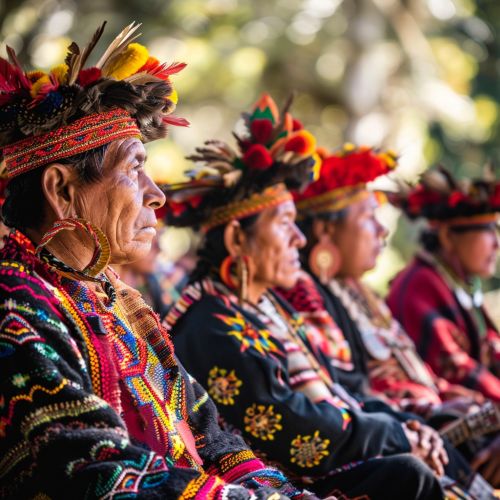Pehuenche language
Introduction
The Pehuenche language, also known as Pewenche or Pewenche Mapudungun, is a dialect of the Mapudungun language spoken by the Pehuenche people, an indigenous group residing primarily in the Andes mountains of Chile and Argentina. This language is part of the Araucanian language family and is closely related to other Mapudungun dialects. The Pehuenche people have a rich cultural heritage, and their language is a vital component of their identity and traditional practices.
Historical Context
The Pehuenche language has a long history intertwined with the cultural and social evolution of the Pehuenche people. Historically, the Pehuenche were semi-nomadic, moving between the lowlands and highlands according to the seasons. This mobility influenced their linguistic practices, leading to a unique dialect that incorporates elements from neighboring languages and cultures. The arrival of Spanish colonizers in the 16th century significantly impacted the Pehuenche language, as Spanish became the dominant language in the region. Despite this, the Pehuenche have managed to preserve their linguistic heritage through oral traditions and cultural practices.
Linguistic Features
Phonology
The phonological system of the Pehuenche language includes a range of consonants and vowels typical of the Mapudungun language family. The consonant inventory includes stops, fricatives, nasals, and approximants. Notably, the language features a series of glottalized consonants, which are produced with a simultaneous closure of the vocal cords. The vowel system is relatively simple, consisting of five vowels: /a/, /e/, /i/, /o/, and /u/.
Morphology
Pehuenche morphology is predominantly agglutinative, meaning that words are formed by stringing together morphemes, each carrying a specific meaning. This allows for the creation of complex words that can convey detailed information about actions, objects, and their relationships. For example, verbs in Pehuenche can be inflected for tense, aspect, mood, and person through the addition of various suffixes.
Syntax
The syntax of Pehuenche follows a Subject-Object-Verb (SOV) order, which is common among Mapudungun dialects. This structure influences the way sentences are constructed and understood. Additionally, Pehuenche employs a range of particles and clitics to indicate grammatical relationships and nuances, such as evidentiality and modality.
Sociolinguistic Aspects
Language Vitality
The vitality of the Pehuenche language is a matter of concern, as it faces challenges from the dominant Spanish language. Efforts to revitalize and preserve the language are ongoing, with initiatives focusing on education, documentation, and the promotion of cultural pride. Community-driven programs aim to teach the language to younger generations and encourage its use in daily life.
Bilingualism and Language Contact
Many Pehuenche speakers are bilingual, fluent in both Pehuenche and Spanish. This bilingualism has led to significant language contact phenomena, including code-switching and borrowing. Spanish loanwords are commonly integrated into Pehuenche, particularly for concepts and objects introduced during and after the colonial period.
Cultural Significance
The Pehuenche language is deeply embedded in the cultural practices and worldview of the Pehuenche people. It is used in traditional ceremonies, storytelling, and the transmission of ancestral knowledge. The language encapsulates unique ecological knowledge, particularly regarding the local flora and fauna, which is crucial for the Pehuenche's subsistence practices.
Current Status and Revitalization Efforts
The current status of the Pehuenche language is precarious, with a declining number of fluent speakers. However, revitalization efforts are gaining momentum. These efforts include the development of educational materials, the establishment of language classes, and the recording of oral histories. Collaboration with linguists and cultural organizations is also playing a vital role in these initiatives.


